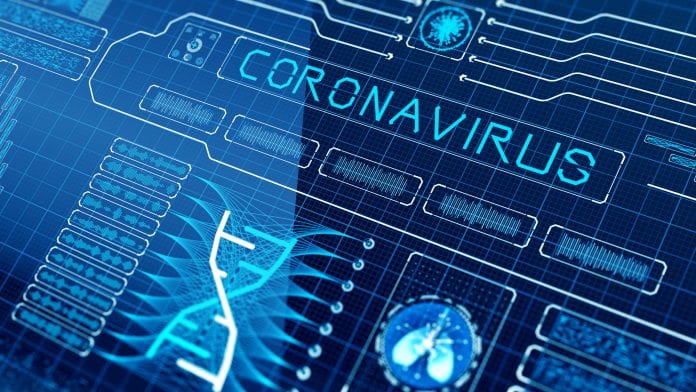After almost one year since the outbreak of COVID-19, the world is still in a race to find a vaccine or remedy against it. Since the Spanish flu, the Corona-virus is the latest pandemic to hold it’s grip on the world as we know it. It affected the way we are living and how we humans interact overall. Therefore, more and more creative solutions have been up for the test against this virus. In order to win the race, lots of research now also calls in the aid of Artificial Intelligence. However, even if well-intended, how far should we take AI in taking on COVID-19? How much of our personal data should we allow AI to process?
Potential uses of AI
First of all, Artificial Intelligence could be used to improve the diagnosing process. As it turns out AI can not replace an entire process, especially in a sector as sensitive as health care where human intervention is vital. Baidu, a Chinese technology company announced last march that it could use infrared sensor systems in order to single out infected persons in crowds (Johnson, 2020).
Another application of AI for COVID-19 diagnosis is the use of AI-driven CT-scan interpreters in order to take time of radiologists’ hands in diagnosing and analyzing the virus. Some hospitals are already using this application, especially in regions where the virus is spreading at a faster rate than hospitals can manage (Wittbold et al., 2020) .
However, finding a quick, efficient and effective way to diagnose people who got infected by the virus, is only a solution to a part of the problem. Luckily, there is also a potential use of AI in research for a vaccine on COVID-19. This can be done by using AI through machine learning into the research of drug discovery for treating diseases. Traditionally drug discovery is a slow process, even without having to adhere to the strict drug-regulations like we have in the European Union. However, through the use of AI one can quickly sift through the large amount of data available on the virus, study the structure and how it affects human beings and consider the suitability of various drugs (Wakefield, 2020).
“Now more than ever, there is a need to unify these disparate drug discovery data sources to allow AI researchers to apply their novel machine-learning techniques to generate new treatments for Covid-19 as soon as possible.” – Prof Ara Darzi, director of the Institute of Global Health Innovation, at Imperial College
AI and personal data
As outlined above, AI has great potential uses for diagnosing and even treating our pandemic, so that we might soon get a glimpse of our social lives as humans before the virus. Now governments and large research institutions are stepping up to introduce apps for the public to download in order to monitor the spread of the virus. With AI and machine learning, lots of data is often required for the system to function at a sufficient level of accuracy (Brynjolfsson and McAfee, 2017). So with the Corona-app launching in the Netherlands, lots of personal data, like health records and how long you had contact with who, is required from the public.
I am really interested in how you think about this development. Would you download the app? Why or why not? Do you think such application is useful for fighting the pandemic? Please let me know what you think in the comments below.
References
– Brynjolfsson, E., & McAfee, A. (2017). The Business of Artificial Intelligence: What It Can — and Cannot — Do for Your Organization. Harvard Business Review Digital Articles, 3–11.
– Johnson, K. (2020). How people are using AI to detect and fight the coronavirus. VentureBeat. https://venturebeat.com/2020/03/03/how-people-are-using-ai-to-detect-and-fight-the-coronavirus/
– NOS. (2020, October 6). Kan de corona-app helpen? Deze deskundigen denken van wel. https://nos.nl/artikel/2351218-kan-de-corona-app-helpen-deze-deskundigen-denken-van-wel.html
– Wakefield, B. J. (2020, April 17). Coronavirus: AI steps up in battle against Covid-19. BBC News. https://www.bbc.com/news/technology-52120747
– Wittbold, K. A., Carroll, C., Iansiti, M., Zhang, H. M., & Landma, A. B. (2020). How Hospitals Are Using AI to Battle Covid-19. Harvard Business Review. https://hbr.org/2020/04/how-hospitals-are-using-ai-to-battle-covid-19


